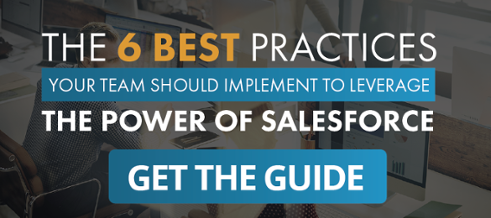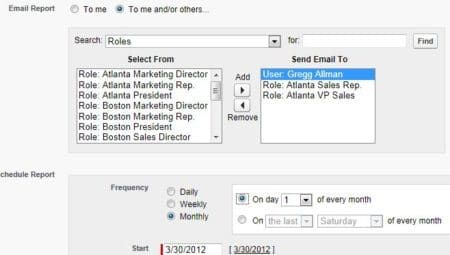As a sales manager, you most likely have a lot on your plate and spend a considerable amount of time tracking down the answers to questions such as:
- “What opportunities are stuck and need help?”
- “How active are my sales reps?”
- “What is the conversion percentage of our leads?”
- “What is my opportunity win/loss ratio?”
By implementing Salesforce Best Practices for Sales Managers and with some help from your Salesforce CRM, all this information and more can be available with a few clicks.
You can even have it auto emailed to you every morning or once a week/month.
By using the “Team” or “Hierarchy” filters in your reports, you can easily see what is happening and be proactive instead of reactive.
With dashboards, have your system administrator set up some “Salesforce Dynamic Dashboards”. This allows you to have one dashboard for your whole team that shows data based on the user viewing it.
Assuming Salesforce sharing rules and your Salefsore role hierarchy are set up properly, each user will see their own stats and you, as their manager in the role hierarchy, can view the whole team’s stats or change the user to see the dashboard from each user’s view

Some reports you may want to consider creating are:
- Salesforce Opportunities that have not been modified nor had an activity in X days
- Open or working leads without an open activity
- Opportunity win/loss ratio by sales rep
- Lead conversion percentage by lead source or campaign
- Activities created by rep by week/month
- Types of activities created by rep (if you are tracking the various types i.e. cold call, left message, conversation, event scheduled, etc.)
Salesforce can also be used to automatically notify you or your sales reps when an opportunity is close to being won by using the “Big Deal Alert” and you can use the “Opportunity Update Reminders” to schedule status updates to be emailed to yourself or your team. These are both available for Professional edition and above.
For Enterprise edition and above users, you can also use workflow rules or approval processes to automate field updates, assigning tasks, or sending email alerts. You may want to automatically assign a task to an opportunity owner if the record has sat in the same stage for X number of days. Then you may want to be alerted if the record is still in the same stage a week after the task was assigned.
How about requiring your approval if a discount exceeds 5%? Between standard functionality and Apex triggers, the options are almost limitless.
Validation rules can help to enforce your business processes and eliminate inefficiency. You can require that the address, email, phone, or all are populated before converting a lead. Or, that the billing address is populated on the account before an opportunity can be set above a certain probability percentage, eliminating the need for accounting to track down the address for won opportunities.
You may also want to consider Salesforce Lead Assignment Rules to ensure that leads are routed to the most qualified sales rep based on your criteria. These can help to avoid leads dropping through the cracks and can help to increase your conversion rates.
Salesforce Lead queues can also help by providing a backup if the primary sales rep is not available. Having multiple people as members of a queue allows the backup rep to take ownership of a lead if the primary rep is not available.
These are some of the steps we have taken with our clients to improve their sales pipeline, efficiency, and quality of life. Depending on your business processes and needs, some of the above may not apply to you but I am sure that at least a few do. So what are you waiting for? Salesforce is a tool and should be doing the grunt work for you. Use it and succeed!
StarrForce is a Salesforce Partner that helps companies deploy, optimize and support Salesforce.com. If you would like information on the services we offer call us at (888) 391-4493 Ext. 101.

